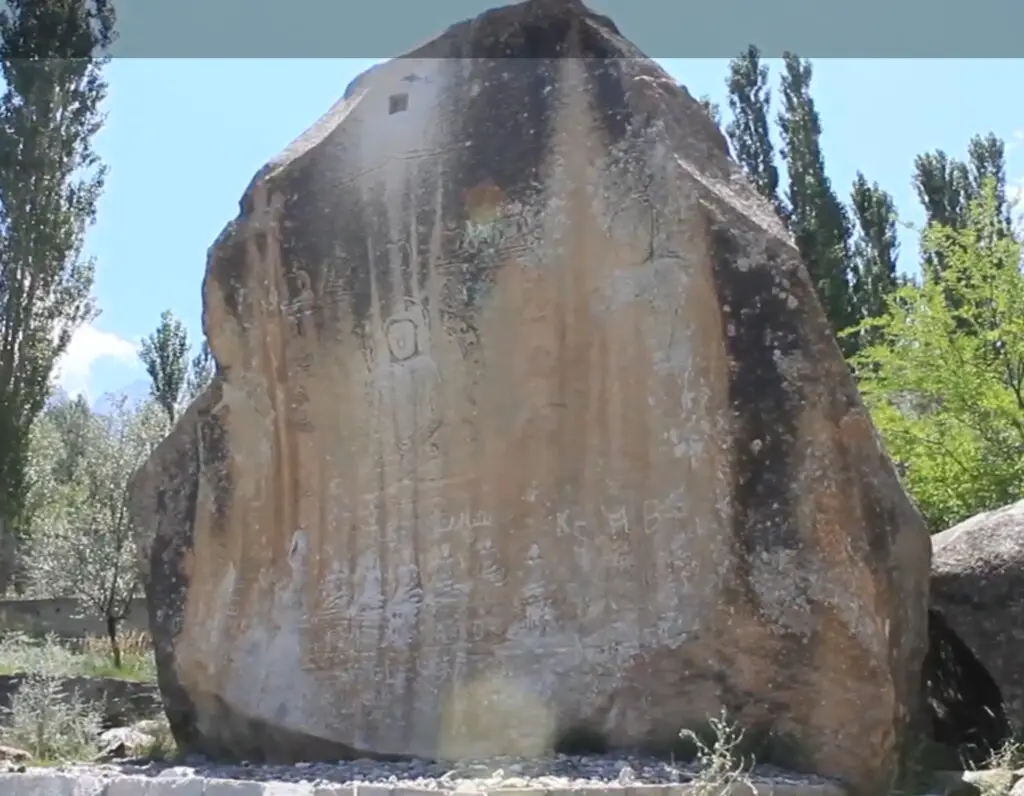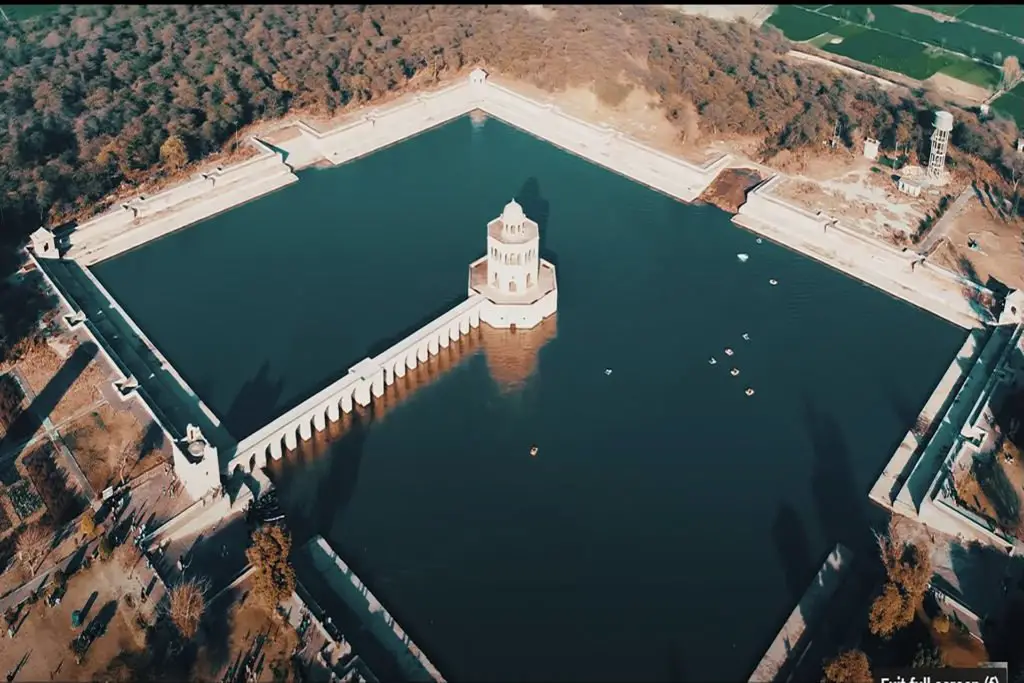Manthal Buddha Rock is a large granite rock with an image of the Buddha carved on it, which is believed to date back to the 8th century. This rock is located in the village of Manthal in the city of Skardu, Pakistan. Manthal Buddha Rock is one of the most important Buddhist monuments in Skardu. It is about 3 kilometers from Sadpara Road. Sadpara Road will lead to Satpara Lake.
The scenery from Buddha Rock is stunning. It is on top of a hill with an amazing view from the top.
Before the arrival of Islam in the Gilgit-Baltistan region, most of the people were Buddhists and carved the Buddha in many stone pieces. This Buddha carving was not known to the world until the beginning of the 20th century due to its remote location. In 1906, Scottish traveler Ella Christie wrote a book about her trip to Western Tibet and carved it in her book, which gained international attention. Since then, the government has taken many steps to preserve this monument and it is visited by tourists who visit the city of Skardu.
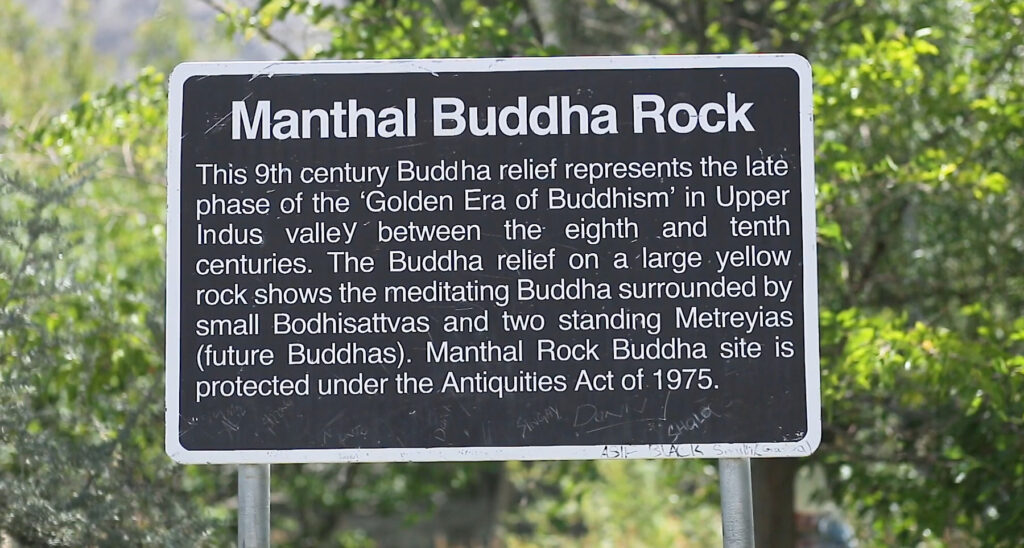
Manthal Buddha Rock Location
Manthal Buddha Rock is one of the most important Buddhist monuments in Skardu. It is about 3 kilometers from Sadpara Road. Sadpara Road will take you to Satpara Lake. The road is not well built, but you will enjoy climbing the hill.
Beautiful streams and scenery around Budha Rock will captivate you.
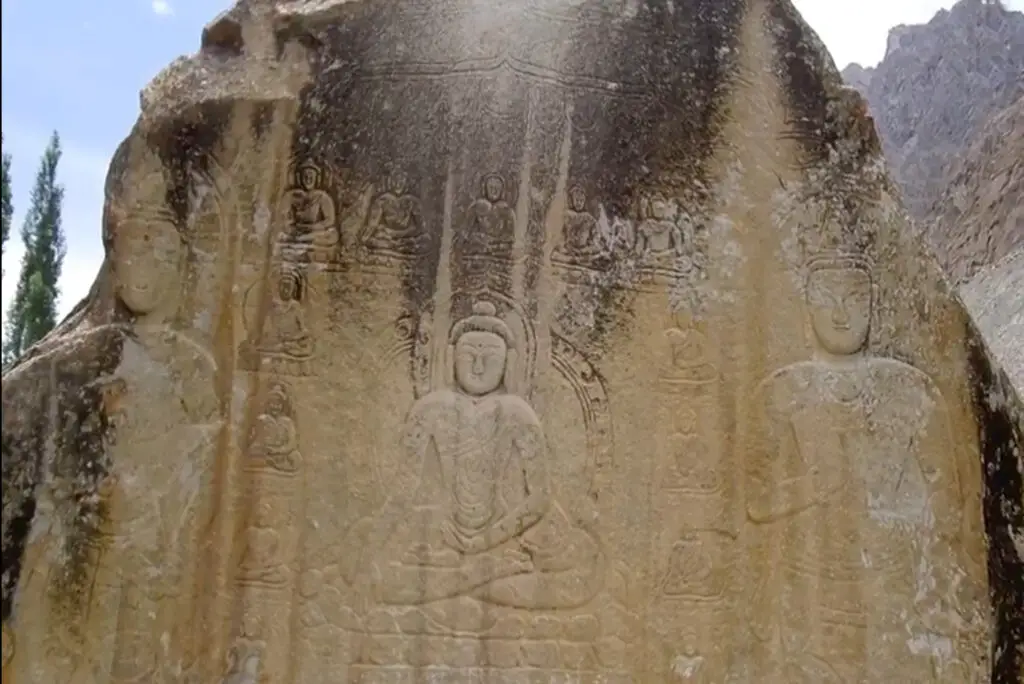
Manthal Budhha Rock is damaged due to weather and lack of maintenance. You will see carvings of one huge Buddha surrounded by small Buddha satvas.
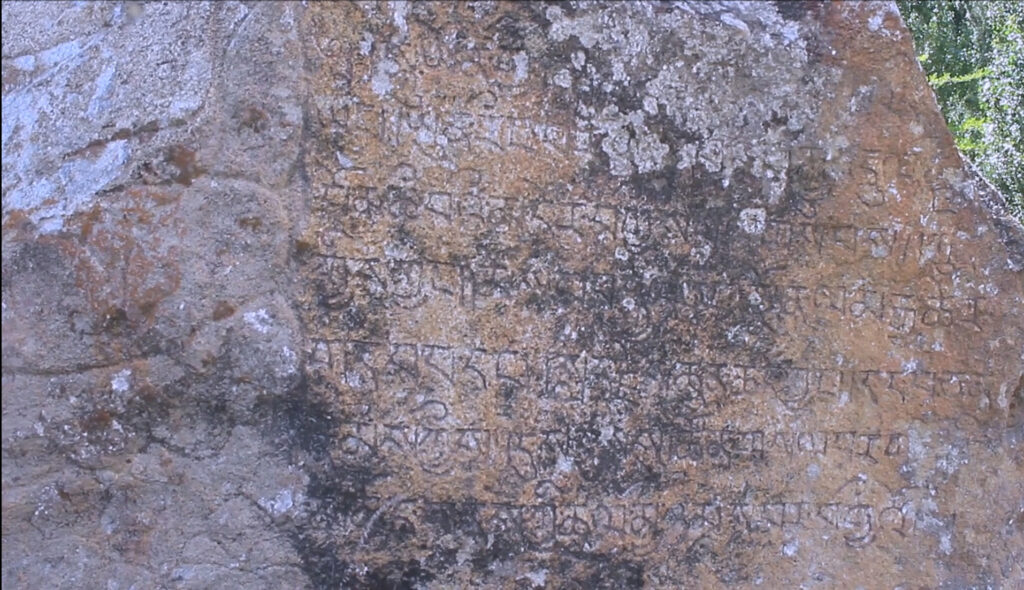
A huge statue of Buddha with his two deputies (Mitriya) standing on either side surrounded by 20 disciples is carved on a large rock located in Manthal village near Sadpara dam. There are some Balti inscriptions at the bottom of the rock.
It is believed that in front of the Manthal Buddha rock there used to be a palace where the local Raja Lontchay was born. Later, the palace was washed away by floods caused by the famous river Hargisa, which still flows along its route.
Manthal Buddha rock is believed to have been carved during the reign of Raja Lontchay, as according to Buddhist tradition they lit a light every evening after the birth of a child. The hearth is still intact on top of the rock in the form of a platform four inches long and wide.
On the other side of the Manthal Buddha rock, say archaeological experts, is the Manthal Buddha Rock called ‘Mandala’ – the gathering place of the Buddhas. The rock carvings were made in the 8th century, when the whole area followed Bonism and Buddhism.
Gurkha soldiers were believed to have destroyed Buddhist scriptures from the Sadpara Dam site sometime before 1913. The historic Rock Buddha contains many images and ancient Tibetan (Balti) inscriptions as seen from the site. On the eastern side of the rock, there is a platform for religious prayers and the back side was used to provide medical facilities to lamas/amcheis (doctors), etc.
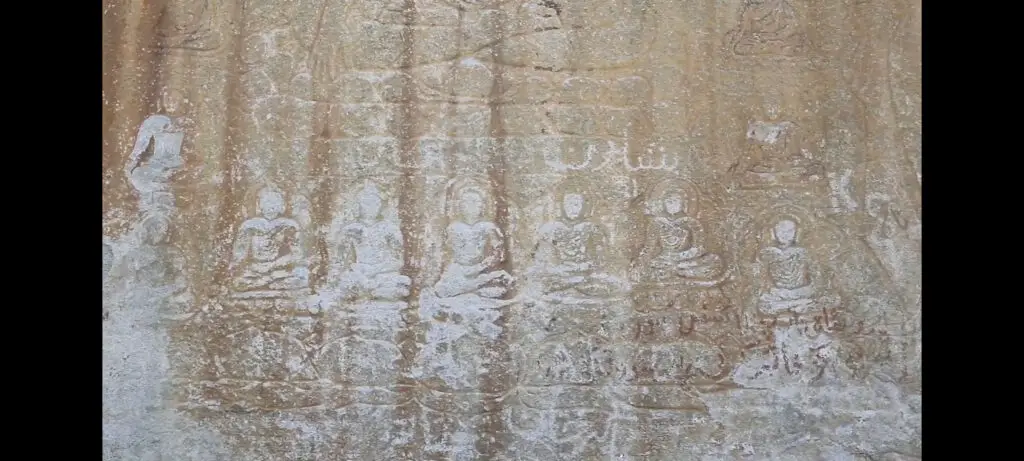
Buddhism is believed to have flourished in Baltistan and Kashmir in the 4th century AD before gaining a foothold in Ladakh and Tibet.
Monasteries such as Chaqchan Gompa in Khaplu, Skyurlung Gompa in Shigar, and Gompa Skardu were built during the Palolashahi Kingdom. These were all their places of worship. The Tibetans made Skardu their capital. Manthal Buddha Rock was also their place of worship which remained until the 13th century.
Traces of the cultural impact of Tibetan Buddhism and art from the 8th to the 12th century are found throughout the region, with a multitude of values associated with them that make them both tangible and intangible cultural assets.
How to get to Manthal Buddha Rock?
Manthal Budha Rock is located on the outskirts of Skardu, just half an hour’s drive from the city center. When you are in Skardu city, the road leading to Deosai or Satpara Lake will take you to this monument. On the way to Satpara Lake or Deosai plains, this rock falls on the right side of the road over a small stream known as Hargisa Nala originating from Sadpara Lake.
Brief History of Buddha Rock Skardu
The region of Baltistan, which now has a 100% Muslim population, was once the epicenter of Buddhism, and Muslims did not exist there. Some historians believe that the Buddhists in the Hindukush region and Afghanistan entered from the Baltistan region.
As the epicenter of Buddhism, they carved the Buddha across Gilgit-Baltistan on large stone pieces, mountains where they found a flat surface, and it seems to have been a way to preserve and preach Buddhism at that time. But in the 14th century, Muslim preachers came to the region and converted the entire region to Islam, the glory of Buddhism disappeared, but the rock carvings still exist there.
How did Buddha Rock come to prominence? An interesting story!
When Buddhism disappeared, rock carvings immortalized in stones still guard the valleys, ravines, villages, and towns of Gilgit-Baltistan. This Buddha rock was not known to the world until the beginning of the 20th century. In 1904, a British traveler arrived in Skardu on her way from Tibet and visited a rock carving, which she mentioned in her book “A Summer Ride in Western Tibet”. Although this feature brought the rock to international prominence, it was not known locally until the beginning of the first decade of the 21st century.
A square-shaped opening at the top of Manthal Buddha
In the upper left corner of the Manthal Buddha Rock, you can see a hole that has a square shape. According to some historians, the hole was cut to hold a light or to hold a beam that supported the roof. According to some sources, there was originally a canopy to protect the carving from weather wear.
Locals’ opinions on the hole
Locals used this hole to throw pebbles to fulfill the myth that if they managed to keep a pebble in the hole, it would be a sign of a good omen. The women would throw pebbles and if the pebble stayed in the hole it would be a sign that they would have a son and if the pebble fell it would be a girl.

